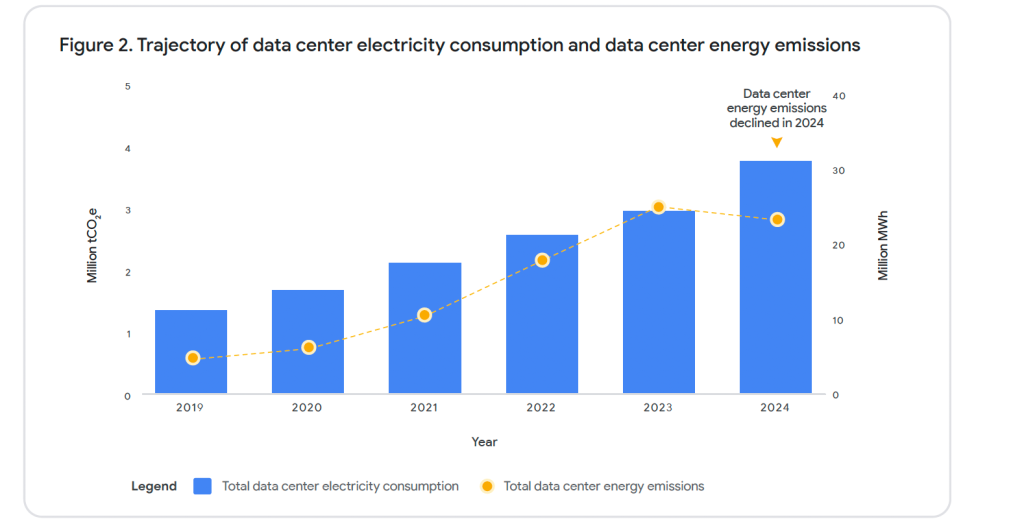Google remains committed to its “intentionally ambitious” pledge to achieve net zero by 2030 — even though the company’s overall greenhouse gas emissions have increased dramatically since its 2019 baseline year.
Google’s emissions reduction strategy, which it says was validated by the Science Based Targets initiative (SBTi) in February, calls for a 50 percent cut to its market-based Scope 1 and 2 emissions (for operations and purchased energy) and to its Scope 3 supply chain footprint. Google plans to “neutralize” the residual emissions with carbon removals.
The integrity of that target is unclear, according to an analysis published June 26, and Google’s 2025 environmental report casts further doubt. The tech giant’s total footprint rose 11 percent in 2024, reaching 11.5 million metric tons of carbon dioxide equivalent (CO2e).
That total excludes some emissions related to Alphabet’s operations, which aren’t part of Google’s SBTi-validated goal. Without those exclusions, the company reported 15.2 metric tons in emissions.
Either way, Google is reporting a cumulative increase of 51 percent since 2019, which is a lot of ground to make up over the next five years, particularly given the hostile U.S. policy climate for clean energy, voracious interest in artificial intelligence and uncertainty over the future direction of greenhouse gas accounting rules.
“The thing with a moonshot goal is it is intentionally ambitious,” said Google Chief Sustainability Officer Kate Brandt. “It can seem impossible at the time that it’s set, and we know that this kind of innovation is not going to be linear. It can take longer than expected, but we do really feel like continuing to pursue these moonshots.”
Obstacles ahead
The biggest drag on Google’s progress in 2024 was the emissions associated with its capital expenditures and use of sold products, which leapt 38 percent to 6.3 million metric tons of CO2e. That’s more than half of Google’s Scope 3 total, and it’s related primarily to construction of new data centers.
Another obstacle that’s beyond Google’s control are the fossil fuels-dominant grids in key regions outside the U.S. “Asia Pacific remains a really big challenge, both for our own operations and also for our suppliers,” Brandt said.
Google is getting around those obstacles by being “resourceful.”
In Singapore, for example, the company is supporting a plant that will burn waste wood along with pilot-scale carbon capture technology. In Taiwan, it is developing a 1 gigawatt solar project portfolio. Some of the power the installations produce may be offered to suppliers and manufacturers in the region, home to many semiconductor plants. It took five years of collaboration to make the partnership possible, Google said.
Getting suppliers to transition to clean power is a heightened focus — independent analysis suggests it could be one-third of the company’s footprint — and Google supports a number of projects meant to encourage alignment with its goals.
In 2023, for example, it started asking key suppliers to adopt a Clean Energy Addendum that commits them to using 100 percent renewable energy by 2029 for the electricity they use to produce Google products.
The company doesn’t have a publicly stated goal for participation, but Brandt said many key suppliers have signed on.

Brigh
Read More

